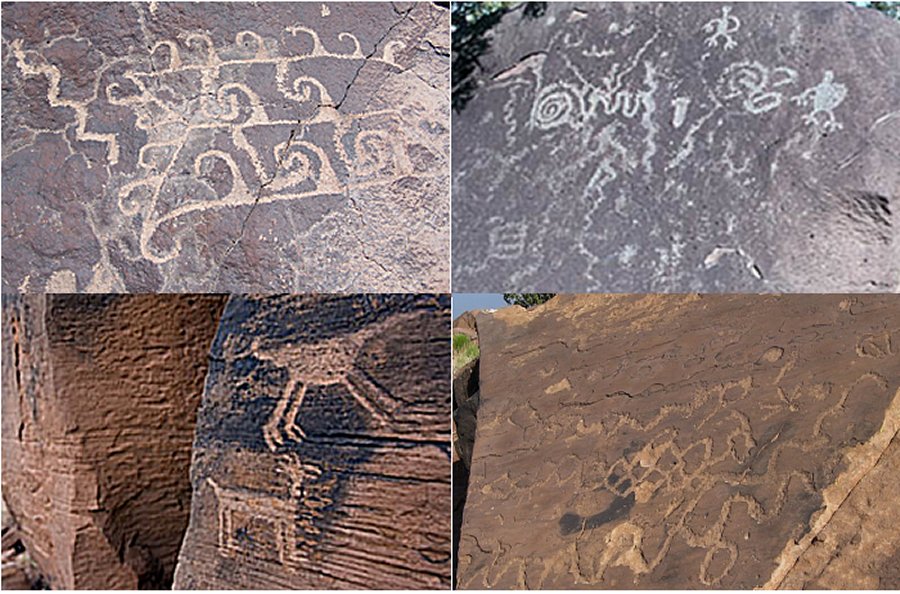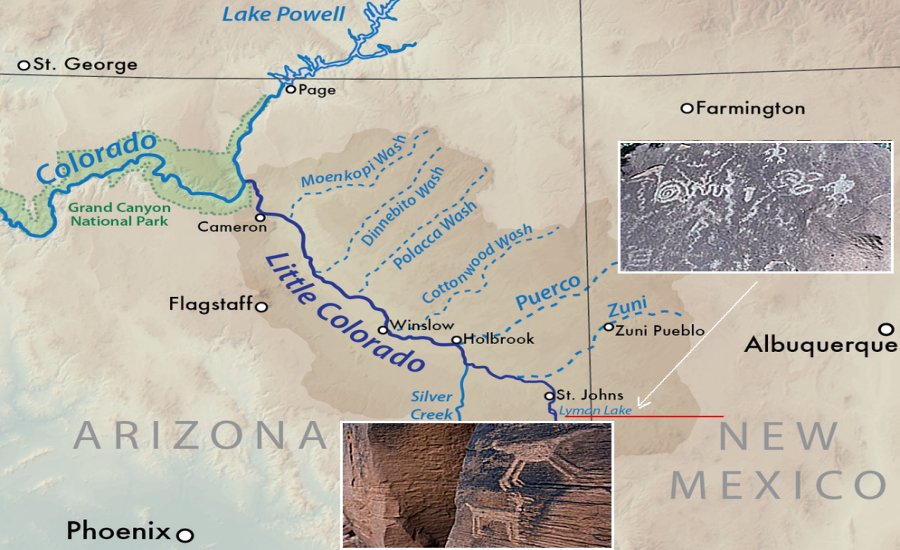MessageToEagle.com – Lyman Lake petroglyphs can be found in Lyman Lake State Park, Arizona. The petroglyphs are the half-mile long, ‘Ultimate Petroglyph Trail’, located on the east side of the lake.
Most of the Lyman Lake rock art was created by pecking and no pictographs (paintings on rock) were found in the area. There are depictions of specific animals, masked figures and a wide variety of geometric shapes.

Archaeologists believe that the diversity of petroglyph styles indicates that more than one prehistoric culture made this rock art; but there is also a possibility that the style used by one culture changed through time.
The earliest petroglyphs in the Park date from the Archaic (6000 BC to 300 AD) and Basketmaker (from about 300 to 700 AD) periods. Most of the petroglyphs date to the Pueblo periods (700 through 1400 AD).

Some archaeologists associate the Lyman Lake rock art with shamanic rituals, but neither the Arizona State University’s archaeologists nor the Hopi agree with this theory.
See also:
Petroglyphs At The Winnemucca Lake: North America’s Oldest Known
Mystery Of Calico Early Man Site In The Mojave Desert: Ancient Overlooked Site In North America
Secrets Of Mysterious Lost Kingdom Of Calusa In Florida And The Shell Indians
Mystery Of The Ancient Double-Headed Eagle Symbol
The ruined buildings, artifacts, and petroglyphs (“rock art”) provide the scientific evidence that permits archaeologists to understand the area’s history.
The pueblo ruins were built by ancestors of the Hopi Indians, who see the abandoned houses, broken pottery fragments, and markings on the rocks as a record left by their ancestors during the migrations described in Hopi oral tradition.
Created as an irrigation reservoir by damming the Little Colorado River, Lyman Lake State Park contains a number of pueblo ruins and rock art sites. Both Rattlesnake Point Pueblo and the Lyman Lake rock art site are important places to Hopi people. Hopi consider these site as homes of their ancestors during their migrations and the petroglyphs are these ancient people’s signs.
In many cases, the designs are associated with particular clans and events that took place during their
migrations; others are clan symbols.
Copyright © MessageToEagle.com. All rights reserved. This material may not be published, broadcast, rewritten or redistributed in whole or part without the express written permission of MessageToEagle.com
Expand for referencesReferences:






